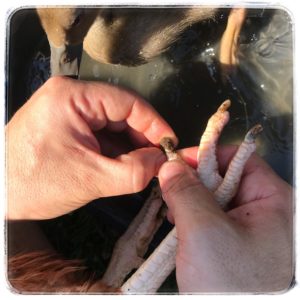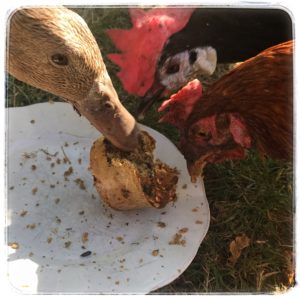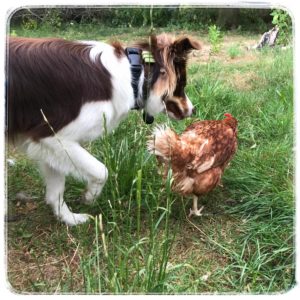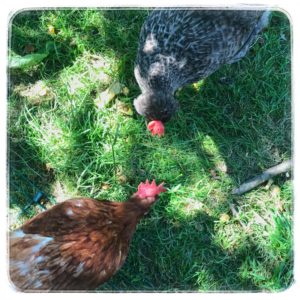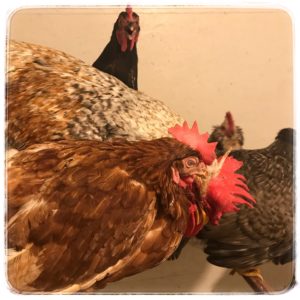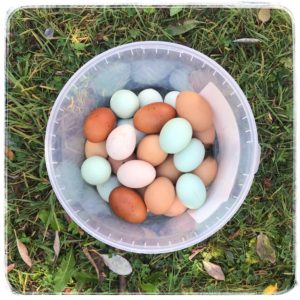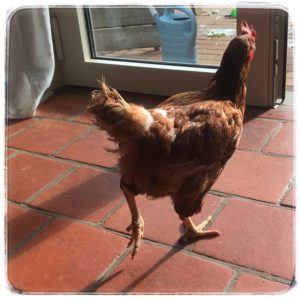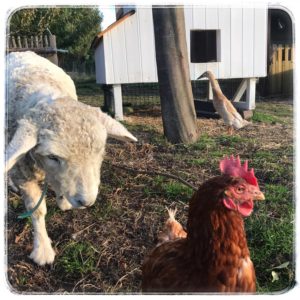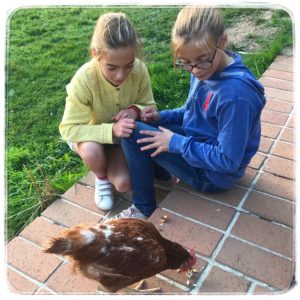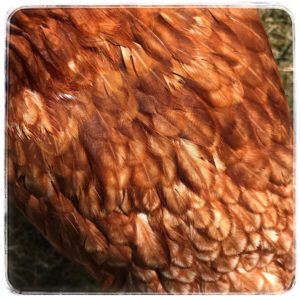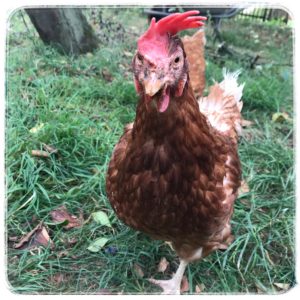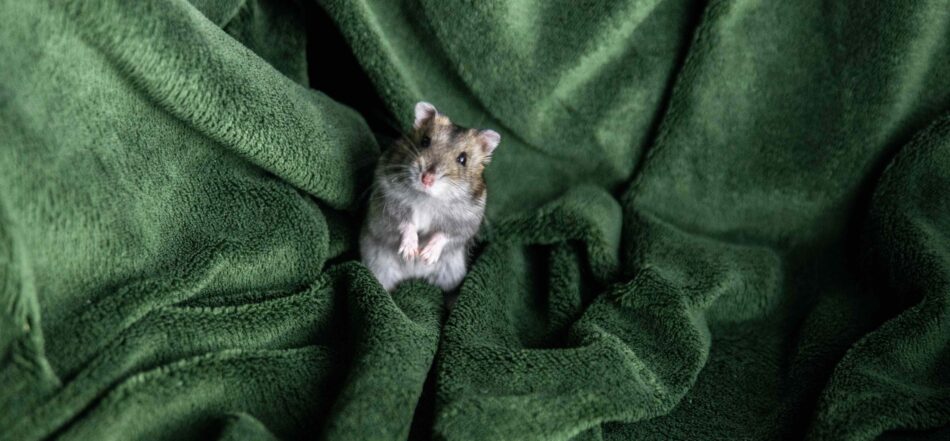
Hamsters make excellent pets – they’re fun, cute, and relatively easy to care for. Their cuddly credentials have made them popular pets all over the world. Hamsters bring a lot of joy to a lot of people, but how can we tell our hamster is happy too, or not? Like all animals, hamsters have the ability to communicate with one another and with their owners. They use body language much like we do and can display a range of emotions that include being happy, afraid, threatened, curious, startled, angry and many other emotions.
Stretching and yawning
Yawning is often a sign your hamster is feeling comfortable and relaxed, rather than being very sleepy. If your hamster stretches as he yawns, this is even more proof that he is a very relaxed hamster.
Freezing
This involves your hamster staying in one position, sometimes for a few minutes. Its ears are straight up and he is completely stiff to the touch. There are lots of potential reasons for hamsters to stop moving temporarily: they can freeze both out of fear and surprise, or they can pause their movement so that they can listen more carefully to something that they’re unsure about.
Sitting up on back legs, ears forward
Something has captured his attention. Your hamster is standing on its hind legs to see and hear better.
Grooming
Hamsters spend a large amount of their time grooming themselves. When a hamster grooms itself, washing its feet, hands and fur, it means that he is feeling secure and happy.
Chewing
If your hamster keeps biting the bars of its cage, then there may be some things that you need to do to improve your pet’s life. Gnawing on the bars of the cage can indicate one of a number of things, including boredom, a lack of space, or overgrown teeth.
Biting
Hamsters can bite when they’re scared, when they’re stressed, or when they’re confused. if your hamster bites you, then there’s almost certainly a reason for it. Maybe your hamster is in pain, or simply uncertain how to react to you. Never get angry at your hamster but try to understand the reason behind his behavior.
Ears folded back, eyes half closed
Your hamster has just woken up and is still sleepy. It is best not to take out your hamster out of its cage until it has woken up fully.
Running
Hamsters are born to run. In their natural habitat they can run up to 5 miles per night! It’s therefore important that hamsters kept as pets have the opportunity to run, usually provided by a wheel. Hyperactivity and repetitive behavior, on the other hand, can also be a sign of stress. A stressed hamster will move constantly, run on his wheels quickly, try and climb his cage and appears more nervous and alert than usual.
All hamsters will have their own personalities. Spend time watching your hamster and get to know his personality and mannerisms. As you get to know your pet, you’ll be able to recognize when they are their usual selves, and when they are not. Observing your hamster’s body language is a great way to be more “in tune” with the needs of your pet, which can be crucial to their health and well being. Visit our extensive hamster guide for more information about hamster and tips on how to keep them healthy and happy.
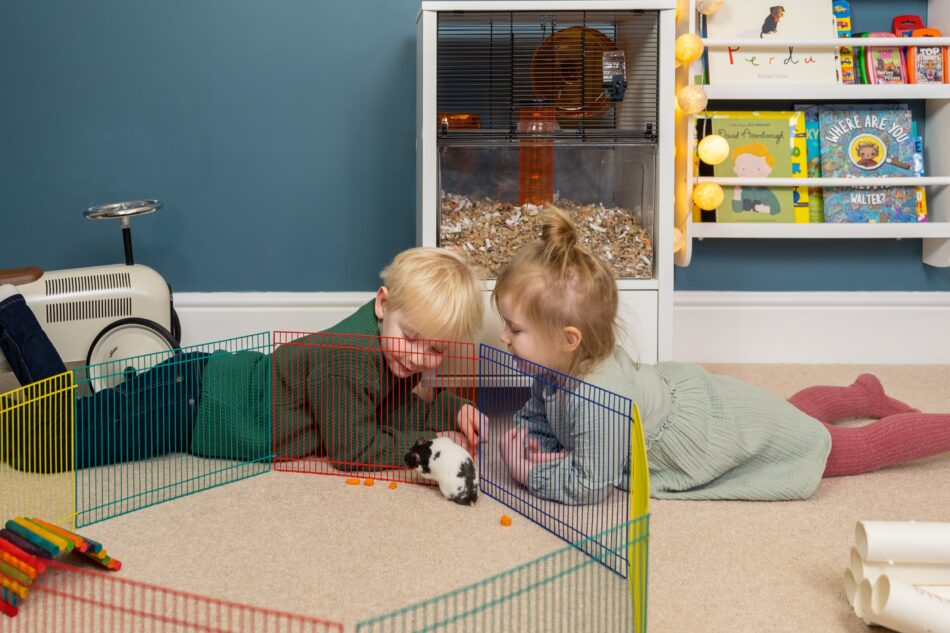
This entry was posted in Hamsters on May 17th, 2019 by chloewelch
Using a steam cleaner to clean any Eglu can be a very effective way. It will not affect the plastic, whereas all surfaces are cleaned, disinfected, and all killed mites, insects and dust are blown away by the power of the steam. As a bonus the surfaces will be dry in no time, because the plastic is warmed up.

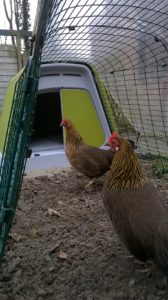
Deep-cleaning an Eglu Go once or twice a year is extra easy if one follows these steps:
1. Take of the top panel (lid)
2. Unscrew both side panels and bumpers, and take these off as well. For a complete cleaning you may want to disconnect the run as well.
3. You now have access to all inner and outer surfaces. Clean them thoroughly with the steam cleaner, if required using an old dish brush as well.
4. Clean the bumpers, panels and top lid in the same way.
5. Re-assemble the run and the coop.
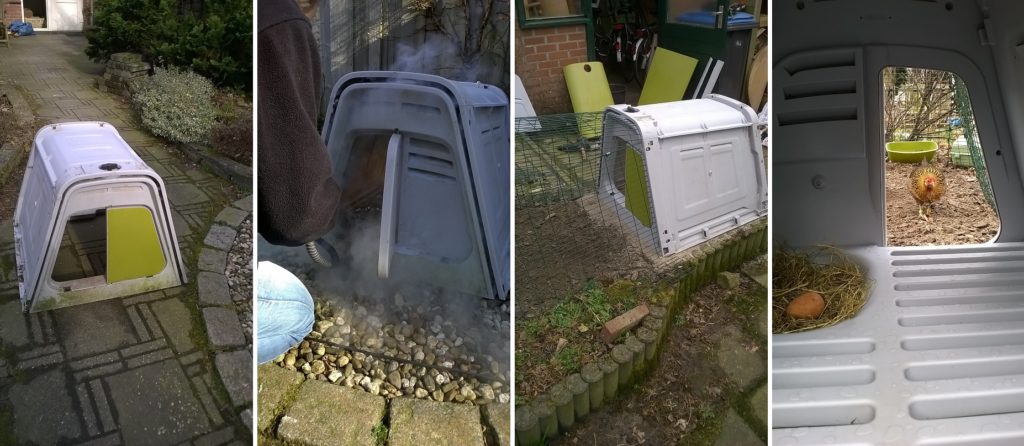
This cleaning method has been used for several years now by our Dutch team-member and is guaranteed to keep your Eglu in top condition, without damaging any parts!
This entry was posted in Chickens on May 17th, 2019 by chloewelch
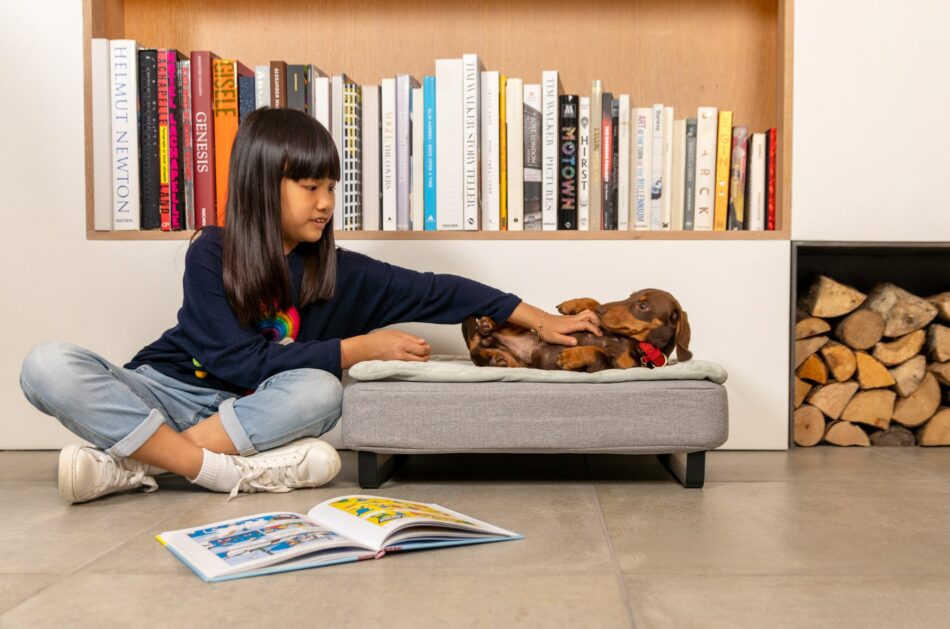
The bond between man and dog is a profound connection that dates back centuries. As every pet parent knows, our four-legged friends often communicate their affection through subtle, yet unmistakable signs. From tail wags that speak volumes to those soulful gazes that melt your heart, our canine friends possess a unique language that expresses love in ways beyond words. Understanding these signs not only strengthens your bond together, but deepens your appreciation for the companionship that dogs bring into our lives. Join us as we explore and reveal the 8 signs that your dog loves you.
1. Tail-wagging welcomes
There’s nothing quite like the exuberant, tail-wagging embrace you receive from your dog when you enter your home. Whether you were gone for 5 minutes or all day at work, their excitement to see you is heard in every joyful bark and seen in every ecstatic spin. It’s as if they’re saying, “You’re home! I miss you so much!”. This genuine delight that we see in our dogs when we arrive home is a testament to their love for us, and with such a warm welcome waiting, the bond between us and them can only deepen daily.
2. Doggy deep breaths
We know that yawning is contagious between humans, but did you know that studies show that dogs are more likely to yawn simultaneously with their owners than with someone they don’t know? It’s suggested that this is a way for dogs to show empathy, and that yawning together with their owners is a sign of affection. For dogs, yawning in the presence of their beloved humans is most often a sign of relaxation and a demonstration of their deep connection with you. But sometimes, your dog’s yawns can be indicative of stress – so make sure you can distinguish their accompanying body language. The next time your pup stretches their jaws with a relaxed body and lets out a yawn, take it as a heartwarming “I love you” in their language.
3. Love licks
Ever noticed how your dog gives you a big, slobbery smooch when you least expect it? Well, that’s no accident! For dogs, licking isn’t just about cleaning themselves or for tasting – it’s one of the strongest ways for dogs to show their pure, unadulterated love. It all goes back to puppyhood. Puppies lick their mother’s face to communicate their needs and show affection and this behavior continues into adulthood.
When your pup plants a wet kiss on your hand or face, they’re not just clearing any leftover crumbs from dinner; they’re bonding with you! So if your dog showers you with licks, just embrace it. The slobber can be wiped away but the fact that your dog thinks you’re the best thing since bacon-flavored treats is irreplaceable.
4. Puppy presents
When your dog brings you their favorite chew toy or nudges their treasured ball in your direction, it’s not just an invitation to play – it’s a declaration of love. Dogs are inherently social animals and they view their humans as part of their pack. So, naturally, sharing their beloved dog toys is a way to foster unity and create a connection. Whether it’s a squeaky plushie or a weathered rope, the act of sharing their toys is your dog’s sign that they trust and adore you. So the next time your furry friend plops their favorite toy on your lap, engage with them and show them you love them just as much.
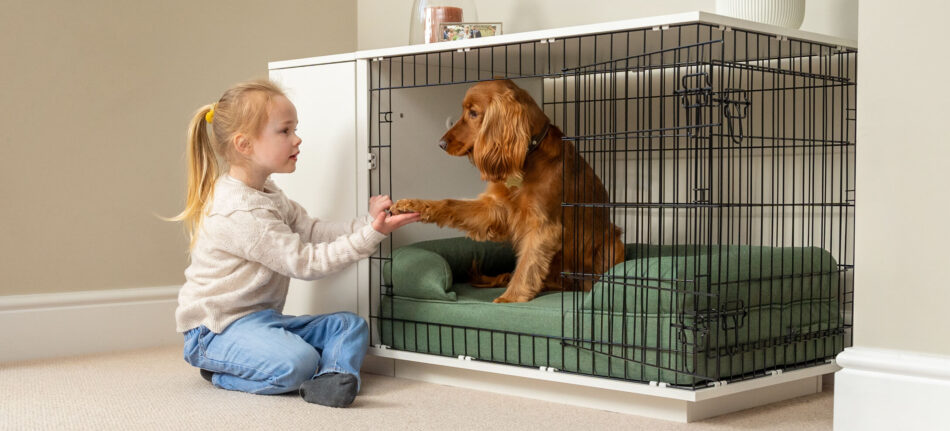
5. Scent masters
Did you know that dogs possess an extraordinary sense of smell that is 10 to 100 times more acute than that of humans? They use this superpower to not just find their toys or detect treats but also to form deep emotional connections. For dogs, everything has its own unique scent – including you. And since you’re their person, they recognize your specific smell amidst a sea of all others because of the emotional attachment they have to it.
You might get a bit annoyed when your pup steals your underwear and runs around the house with them, but try to remember that this thievery is actually a strong sign of affection. It means that your dog wants to feel close to you even when you’re not right next to them. So if you see your dog doing this, leave an old T-shirt in their bed when you’re out of the house to help make them feel safe.
6. Puppy dog eyes
When it comes to non-verbal communication, dogs are the masters. If you’ve ever caught your dog staring at you it’s likely not just a casual glance. For dogs, maintaining eye contact is their way of telling you that they love you. In fact, eye contact releases the hormone oxytocin in the brain, which triggers feelings of comfort and affection, ultimately creating a stronger bond between you and your canine companion. And what’s even more interesting is that this silent way of showing affection is usually only reserved for their people. Dogs don’t use eye contact in the same way within their own species and prolonged eye contact between two dogs can actually be a sign of aggression.
7. Love lounging
There are several ways your dog can use body language to show that they feel completely comfortable in your presence. When dogs exhibit relaxed body language, it’s a remarkable display of their deep-rooted love and affection towards you. With a loose stance, ears in a neutral position, and a slightly open mouth, your dog is signifying total comfort and ease in your relationship. Your dog can literally make its body be a reflection of affection for you, which is a testament to their unbroken trust in you.
8. Canine comfort
In the wild, dogs sleep huddled with their pack for warmth and security. But through domestication, you’re the only pack they have, so you may find your furry friend choosing to snuggle up next to you instead. When allowed to, dogs will sleep as close to their beloved humans as possible, both to feel protected and to protect the people they love the most – which is you. In a similar way, dogs also show you their love by staying close to you when they are feeling stressed or intimidated.
While we all love a good snuggle with our pets, when it’s time for them to nap or sleep for the night, it’s important to find them a dog bed that suits your canine’s comfort needs. The Omlet Topology Dog Bed is the perfect snuggle substitution with its customizable toppers that can be paired with your dog’s specific sleep style. Every snuggle is special and we designed the Topology Dog Bed to reflect that.
Omlet and your dog
From wagging tails to soulful gazes, one thing remains clear – our dogs can speak volumes through their unspoken language of love. At Omlet, we amplify these heartwarming connections through our products that bring you and your pet closer together. Identifying the signs your dog is sending to show you their love is easy. Meeting them with the same unconditional love in return is the “why” behind all of Omlet’s designs and creations like the Topology dog bed and playful dog toys. After all, the bond between human and canine is as old as time and one that should be celebrated.

This entry was posted in Dogs on May 17th, 2019 by chloewelch
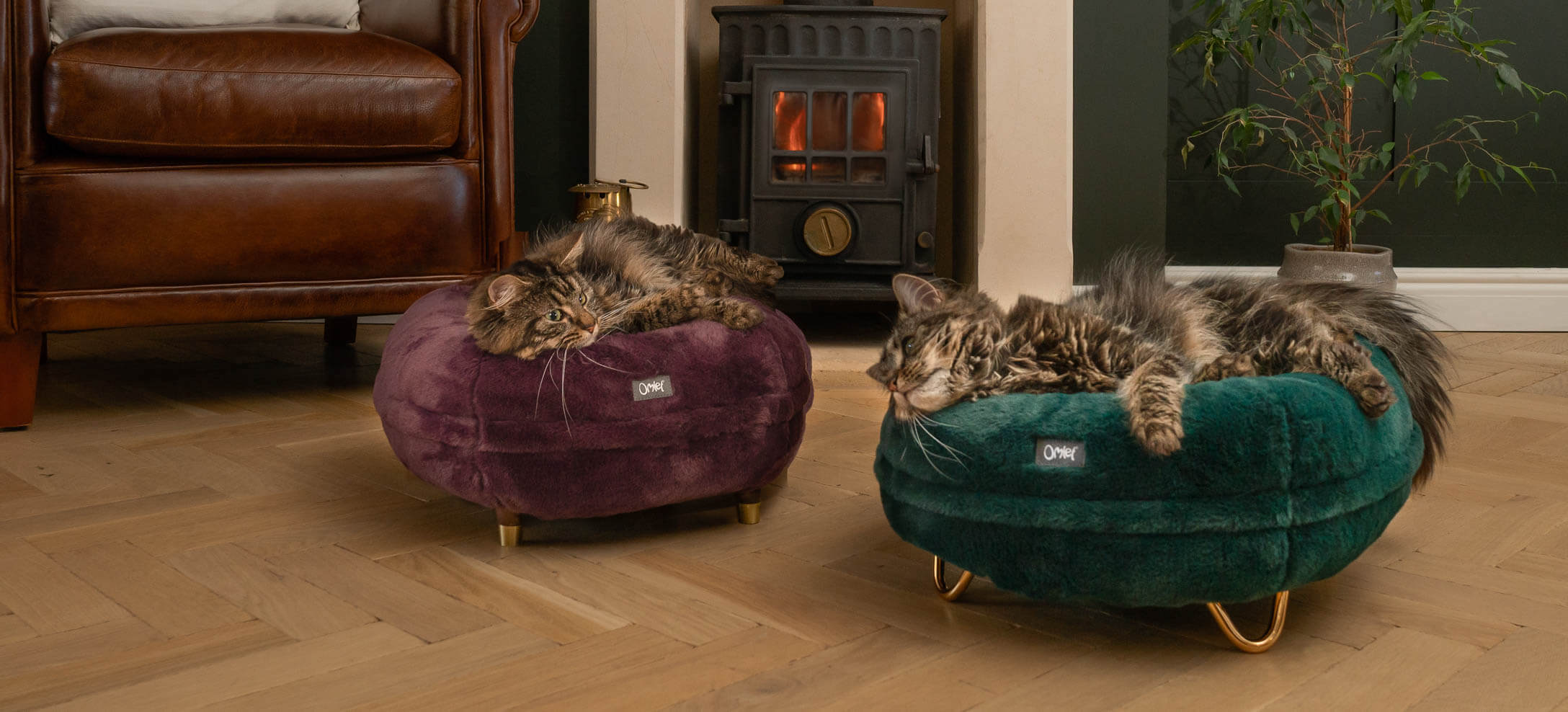
From purring to pouncing and all things in between, our cats’ nighttime antics can be enough to wake up even the heaviest of sleepers. But, to find out just how much our cats affect our sleep and the many ways they do so, we decided to conduct a survey and shed light on feline sleeping patterns.
The feline snoozing survey
The results are in, but what did our survey tell us? More than 80% of cat owners are having their sleep disturbed by their feline friends, reveals the latest Omlet survey. Following a discussion amongst the Omlet cat owners about the close sleeping arrangements with our pets, and the resulting impact on our daytime energy levels, we began wondering whether it is actually normal, or wise, to be allowing our cats to sleep in our beds. Are we just soft when it comes to letting our cats get cozy at night, or are we a nation of pet slaves who value our cats’ happiness more than our own sleep?
Over 900 cat owners responded and more than half (56%) said they let their cat sleep on the bed with them at night, with 40% allowing them to do so on the first day! In fact, by the end of the first month of cat ownership, the number has increased to 71% of owners allowing their cats into their beds at night.
A massive 84% of cat owners who allow their cat to sleep in their bedroom admitted to having their sleep disturbed by their cat – and as a result 1 in 5 cat owners sometimes resent their cat following a bad night’s sleep. Could this cozy sleeping arrangement actually be negatively impacting the nations’ relationship with their cats?
Cat nap or chaotic slumber?
We then invited these cat owners to share how exactly their cat disturbs their sleep. Many agreed that the main disturbance is due to their cats lying too close to them, purring, snoring or cleaning themselves. Here are our top 10 favourite, more unusual, ways that cats are disturbing their owners’ sleep…
- Chasing mice around the bedroom
- Patting my face
- Trying to eat my toes
- Zoomies at 3 am
- Dribbling on me
- Hairballs
- Trying to wake me up for breakfast, or asking for a snack
- Knocking things off shelves
- Licking my eyelid
- Restless dreams
A third of cat owners say they have to change their bed sheets more regularly since allowing their furry friend to sleep on their bed. Only a small number of participants (12.2%) are aware that allowing cats to sleep in their beds can be unhygienic.
Cornell University’s College of Veterinary Medicine found that when you look a bit closer cats can have parasites like fleas and ringworms, which unless treated can cause health issues in humans*. Fleas for example can jump into your mouth leading to owners becoming inadvertently infected by tapeworms. Yuck!
37% of cat owners have made the wise choice to shut their bedroom door at night, saying they can’t allow their cat to sleep on the bed because their sleep gets disturbed.
1 in 4 owners wish their cat would sleep in their own bed at night – which begs the question, why don’t they?
Perhaps they’re so connected to their owner that they can’t bear to be more than 2 inches away from them, or maybe their owner has never found a cat bed which provides the same level of luxurious comfort as a king-size bed and a thick, cozy duvet does? Until now…
Your cat’s sleeping solution
Bedsharing with your feline friend may leave you feeling better connected, but as evidence shows, doing so isn’t great for either party. That’s why at Omlet, we designed a bed that your kitty won’t be able to resist.
The Omlet Maya Donut cat bed offers a divine, sinking feeling for felines, complete with a faux fur cover to make for easy cleaning – happy cat, happy owner. The supportive shape also means cats can feel super secure, cocooned in a cozy nest area that feels like a big hug.
Place your Maya Donut cat bed inside the Omlet Maya Indoor cat house for the ultimate feline hideaway. Complete with optional storage space, your cat’s sleeping space can be transformed into a secluded and calming zone for them to be in complete peace and most importantly, out of mischief.
Designed to look like a piece of modern furniture, the Maya Indoor cat house looks great in any room and can be placed in your bedroom if your cat likes to be close to you, or downstairs to give you a truly undisturbed sleep while your cat enjoys a luxurious slumber in their very own cat house.
Overall 52% of cat owners said they may prefer it if their cat slept in their own bed, yet 70% of people say they don’t regret allowing their cat to sleep on their bed. So the Maya Indoor cat house might be the perfect compromise to keep both cats and their owners happy.
Omlet and your cat
Whether your cat chooses to sleep in your room, or somewhere else in the home, we designed products they won’t be able to resist. From the Maya Donut cat bed to the Maya Indoor cat house, your feline will choose to get their sleep in their own space every time, whilst building a wondrous connection with their owners as daytime arrives.
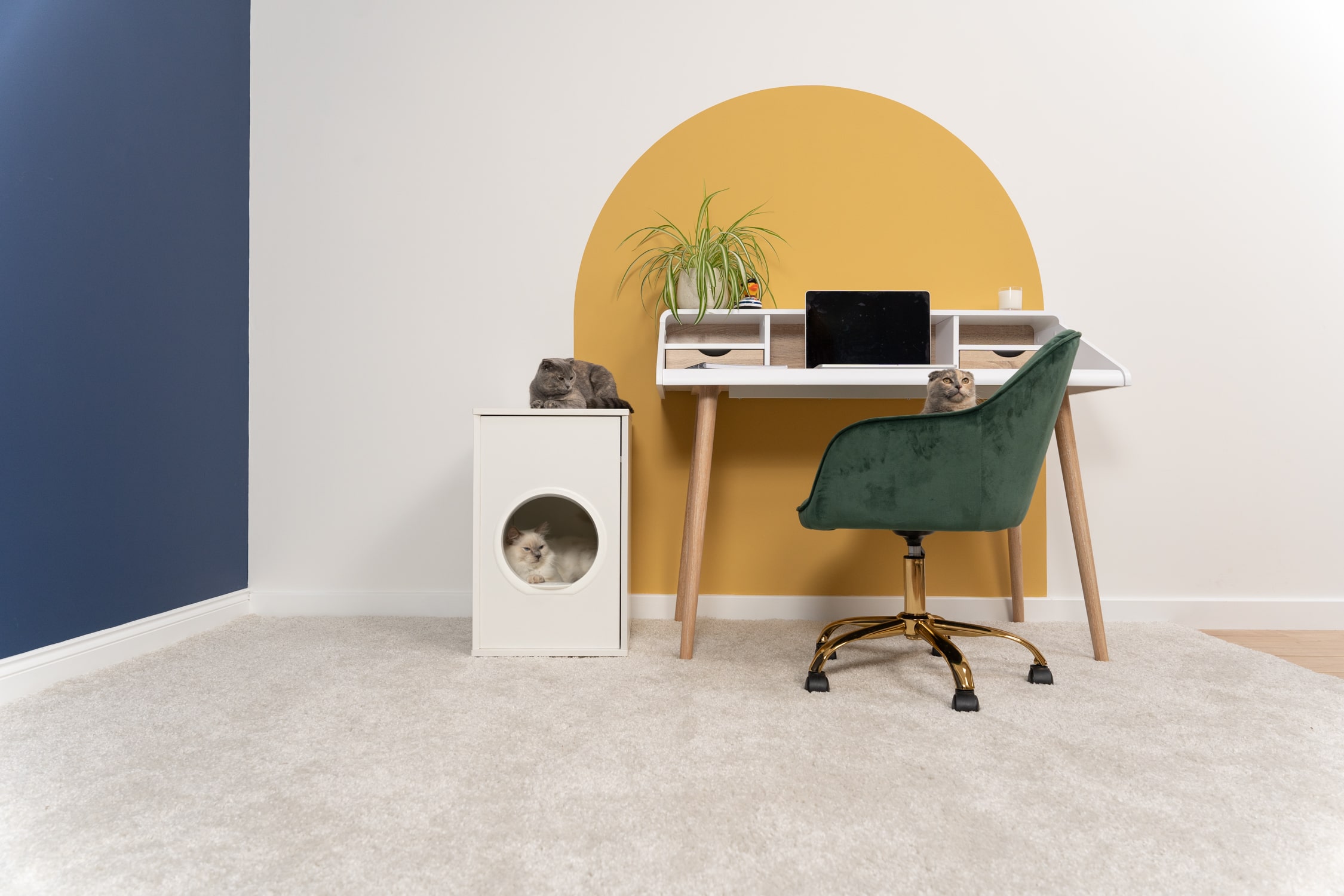
*https://www.vet.cornell.edu/departments-centers-and-institutes/cornell-feline-health-center/health-information/feline-health-topics/fleas
This entry was posted in Cats on May 17th, 2019 by chloewelch
Looking for a breakfast treat that will impress guests, but doesn’t take all morning? Put your girls’ eggs to delicious use with this gooey Nutella French Toast and a selection of toppings, perfect for a tasty brunch to be enjoyed with family and friends this summer.
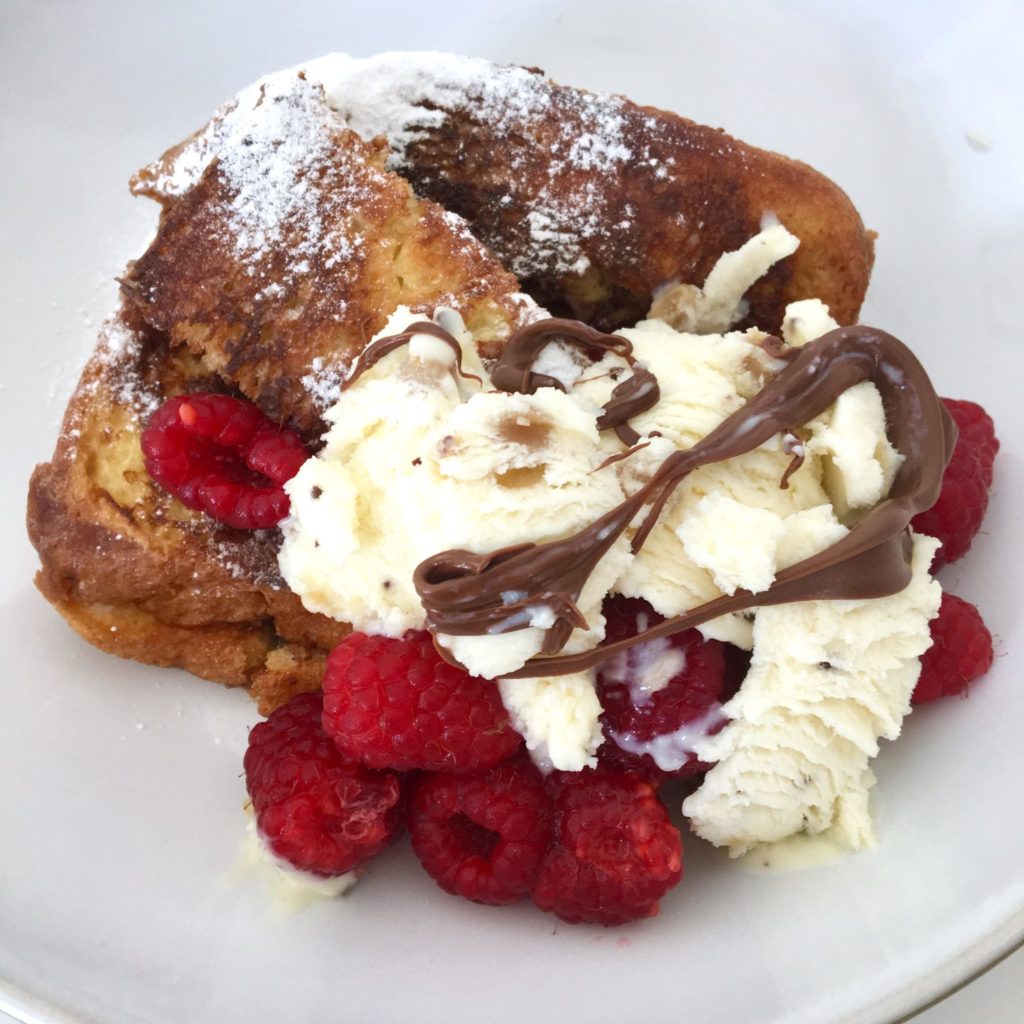
Ingredients – serves 4
- Sliced Brioche Loaf (8 slices serves 4)
- Lots of Nutella!
- 2 eggs
- 2 tbsp milk
- ½ teaspoon vanilla extract
- Butter for frying
- Toppings of your choice. We recommend a dusting of icing sugar, fresh summer berries, vanilla ice cream, and more Nutella!
Method
- In a bowl, beat together the eggs, milk and vanilla extract. Pour into a shallow dish, such as a pasta bowl.
- Spread Nutella (as much as you would like!) on one side of 2 slices of the brioche loaf and put together to create a sandwich.
- Pop roughly a teaspoon of butter in a frying pan on a medium heat.
- Soak each side of the Nutella brioche sandwich in the egg mixture for a couple of seconds, and then place in the frying pan when the butter is melted and hot.
- Allow the brioche to fry for 1-2 minutes on each side until golden brown.
- We cut these into thirds and served with a selection of toppings for guests to choose from.
This entry was posted in Recipes on May 17th, 2019 by chloewelch
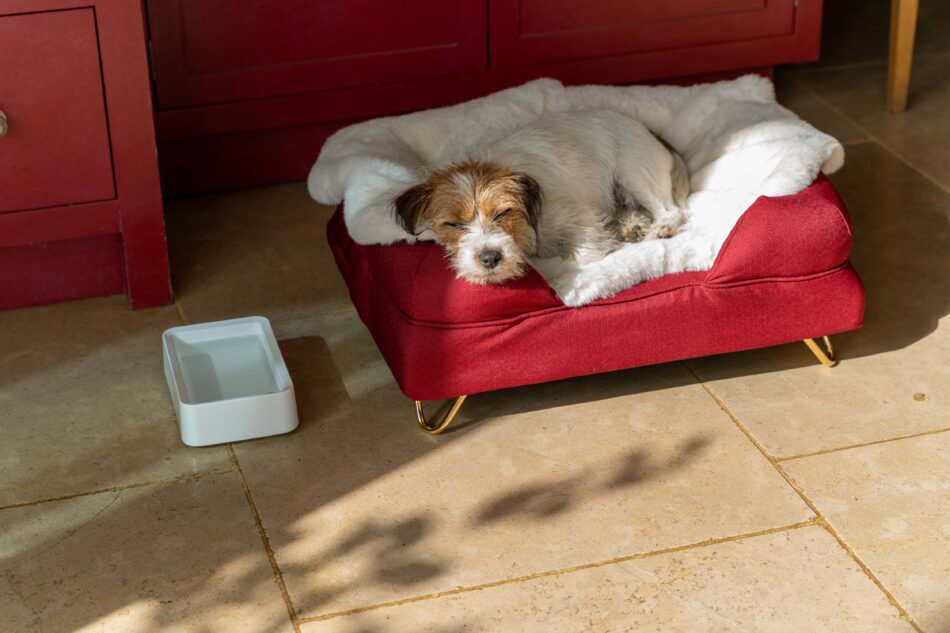
For most pet dogs meal time isn’t very challenging time of the day. Typically owners only put the food bowl down and leave them to it. If this suits you and your dog that’s absolutely fine, but they would without a doubt not have been served food in this way in the wild. Instead they would have had to scavenge and hunt for their meals, keeping both mind and body active. If you feel like you would like to challenge your dog and enrich their daily routine, then making some changes to their meal times can be a good start.
Adding more mental stimulation to your dog’s life can have several benefits. It keeps them busy and tires them out in a similar way to a long walk. Many dog owners forget about challenging their dogs mentally, and when they encounter problems with boredom and linked behavioural issues like chewing, pacing, jumping and barking, they just presume they need to increase the physical exercise. This helps, but it doesn’t satisfy your dog’s hunger for mental stimulation.
Mentally stimulated dogs are not as hyperactive, and they tend to adapt more easily to stress. This is useful if you’ve got a very worried pup who shows aggression towards other dogs walking past the house, struggles with separation anxiety or gets stressed during thunderstorms or fireworks.
Brain games are therefore a brilliant way of tiring your dog out for the evening, or before you leave for work in the morning. By combining this with their normal feeding time, it won’t take much longer than normal, and your dog will love the extra challenge. Additionally you don’t have to worry about giving your dog too many treats as they are rewarded with food they would have eaten anyway.
So what are some fun ways of mentally stimulating your dog during meal times?
The aim is that it should take your dog 10-15 minutes to finish their food. Make sure you supervise your dog the first few times you’re trying a new way of feeding.
Our first tip is nose work. Using their nose comes naturally to dogs, and searching for their food will definitely add stimulation to their daily routine. Scatter the food in the garden so that your dog will have to sniff around to find it. You can also do this indoors, but it might be good to choose a room that’s easy to clean and where the pieces of food won’t get stuck under furniture. If you want to make it even more challenging you can hide little heaps of food under a bush, on a window sill or behind some flower pots. If your dog doesn’t get the game, start with something that smells a bit more than their normal dry food.
Our second suggestion is puzzles and food dispensing toys. The Classic Kong is the most well known food dispensing toy, but you can also find treat balls and complicated puzzles that provide your dog with a harder challenge before they are rewarded with food. The idea with most of these is that your dog will have to move the toy around the floor or press certain parts of the toy to make the food fall out. Dogs absolutely love this, and as they get rewarded again and again it can keep them entertained for hours.
If you don’t want to buy toys you can make some yourself. Try putting the food in a cereal box and taping it shut, in a toilet roll with folded sides, or in a plastic bottle with some holes cut out where the food can fall out. This can get a bit messy, and definitely noisy, but it’s worth it when you see your dog running around trying to get into the box, tail wagging with excitement.
You can also use mealtime as an opportunity to practice tricks and teach your dog new ones. Don’t ask your dog to do the same tricks every meal time, as it will just become a part of the routine, and not challenging or mentally stimulating. By using this time for training you are able to give your dog more than just the one treat at a time, as it’s the food he or she is supposed to eat anyway. This will form a stronger positive association, and your dog might learn faster.
Another thing you can do to change the daily routine is to change the texture of the food. If your dog normally gets wet food, try freezing it into little discs or cubes that they will love crunching on. If your dog gets dry food you can mush it up with a bit of yoghurt or water. It’s all about novelty and enriching your dog’s daily routine!
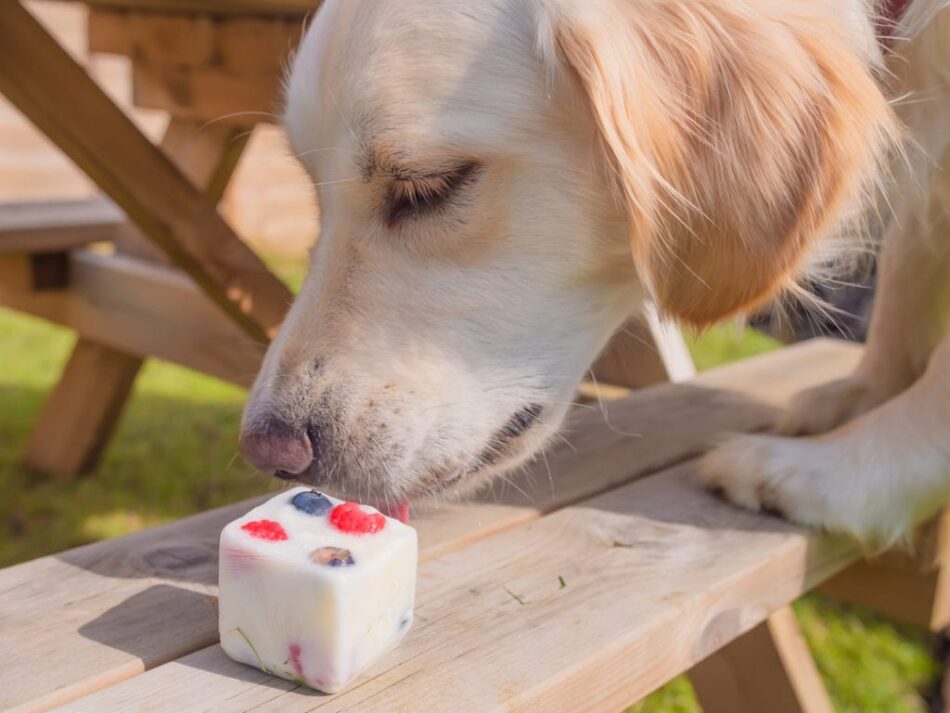
This entry was posted in Dogs on May 17th, 2019 by chloewelch
Nathalie is the owner of the Instagram account My Backyard Paradise. Together with her husband and their three teenage daughters she runs her own ‘mini backyard farm’ in Belgium. The beautiful pictures she shares with her Instagram followers show that this truly is a backyard paradise. In June 2018 Nathalie decided to extend her mini farm with three ex-battery hens. Follow their journey to recovery in the two-part photo diary she kept for us. You can find part one here.
Week 3
The chickens are still eating an Alfamix mixture, a very rich grain blend with pellets and amphipods, and layers pellets. It’s time to further reduce the layers pellets (this was the only feed they had before we rescued them). For one month we will only give them Alfamix, then they will get the same food as our other chickens. Our chickens also always have access to a large meadow where they can find lots of extra food.
It’s also time to do something about their nails. Usually it’s better not to cut chicken nails, they just have to wear down. But the manure stuck under their nails needs to go. We soak their feet in lukewarm water and wash off the manure. This takes more than half an hour per chicken. In the meanwhile our ducks decide to help us and bathe in the water! As a reward we give the chickens a treat afterwards. It’s strawberry season, so I cut some strawberries into small pieces. My husband says the chickens are still ignorant, they are not used to anything and do not know how to eat a whole strawberry. But they do like the small pieces, they finish them in no time. Slowly we introduce more variation into their diet. Our chickens always get a decent amount of fruits and vegetables, kitchen scraps, leftovers from our children’s lunch boxes etc. We’d rather give it to our chickens than putting it on the compost heap.
We are down to two eggs per day. One chicken stopped laying completely, but we don’t blame her. It’s nature and we have to respect it.
This week it rained for the first time in a long time. Fortunately, I have a very caring daughter who wants to make sure the chickens look for shelter. When she checks on them she finds them in their run, not moving and soaking wet. When she comes back in she’s also soaking wet. She tells me she put the chickens in their Eglu and closed the door “because otherwise they will never learn, mum!”. Our children are really interested in our new chickens and they think it’s terrible how laying hens are treated by the industry. They tell me that next time we have to save 50 chickens! But I don’t think our neighbors would agree with that. It’s important our children learn that nature has a rhythm, and that chickens lay fewer eggs during winter. But this doesn’t mean they have to die! We will just eat less eggs and have to remember to store eggs in the freezer so we can use them for cakes later on. We certainly will not buy any eggs this winter!
Week 4
Our chickens really start to get to know us and they know when we will bring them treats. It’s now time to introduce them to the rest of our chicken family. Our chickens have not been allowed to free-range since the new chickens arrived. The risk that they would transmit parasites was just too high. But now they are allowed to run free again. And they are very curious to meet these three brown newcomers! The new ladies on the contrary are not too sure about this and stay close together in the middle of their run. We will spend this week introducing them to each other. Eventually we want to keep them all in the same large chicken coop. In no time they are used to the other chickens and don’t even seem to notice anymore when ten other hens scratch around their run.
Since they are now part of our extended chicken family we have to come up with names for the ladies. This is something we always decide as a family. We decide to go with names of the Belgian Royal Family. Overall, they will be our best laying hens, so they deserve some respect. We name them Louise, Elisabeth and Mathilde. They are not scared anymore and eat from our hands. It helps when you talk to them softly, as they start to recognize your voice and associate it with food. Besides vegetables we now also feed them scraps like rice and pasta, which they really seem to enjoy. And they still give us two eggs every day!
Second month
It’s finally time. We move the Eglu to the orchard, our chickens’ playground. We open the door of the chicken run. Our ladies stay inside, but our greedy Faverolle cannot wait to taste their feed and unsuspectingly enters the run. Immediately the three chickens attack. My children are shocked, they did not see this coming! I don’t worry too much since I know they’ll soon sort themselves out and are now strong enough to defend themselves. We just have to give them a few days to get used to each other.
They then take off to discover the orchard, but stay together all the time, and the other chickens don’t come near them. But it is time for them to sleep in the big chicken coop with the other chickens. At night, when it’s already dark, we take them out of their Eglu and put them on a perch in the big coop. The best time to do this is at night when it’s dark, so they won’t start fighting. This way the chickens will also all have the same smell in the morning. We keep the automatic chicken door closed for 2 days. This will enable them to sort out the pecking order and it will give them time to get used to their new home.
The transition actually goes really well. But they don’t let the rooster come near them! They are clearly higher in the pecking order than him! After two days we open the door of the chicken coop and allow everyone outside. The three ladies are slightly hesitant but eventually decide to have a look outside to see what the other chickens are up to. The only problem with the three chickens is that they like to stay out late, after the door of the automatic coop has already closed. My husband takes a flashlight to look for the chickens and puts them in the coop with the other chickens. But we can’t do this every night… We’re going on holiday soon and we want the chickens to go inside the coop by themselves. Instead of putting them in the coop we just manually open the door again when they want to get in. After a few days they enter the coop before the door closes. We can now go on holiday and don’t have to worry anymore!
I notice that since they’ve decided to sleep inside the coop, they’ve really found their place in the group. They even sleep on the highest perch. We notice the amount of eggs has really decreased. We just find one egg per day, which is strange since we hear two chickens clucking. Our youngest daughter decides to keep a close eye on the chickens. After spending half the day in the orchard, our daughter proudly tells us she found out where one of the hens is laying her eggs. There is a hidden nest! A true treasure with seven eggs in it! After removing the eggs and twigs, this hen also decides to lay her eggs in the chicken coop.
Three months later
We split our holiday in two so we can check on our chickens and collect their eggs. There is a fox in the neighborhood, so we are scared every time we come back home. But they’re all still there! We have an automatic poultry drinker, they have plenty of food in their feed bucket, and with all the plums, peaches and apples falling from the trees there’s also more than enough variation! There’s nothing better than a bunch of happy chickens and a bucket filled with colorful eggs. Now all of our chickens are allowed to free range in the garden when we are home. The three ladies are now the most adventurous. Our other chickens never noticed the compost heap but the three ladies have already found it (and they help mixing it a little bit). The only chickens that sometimes enter the kitchen are these three. And when we have dinner outside, one of them will sometimes just jump on the table. They surely provide entertainment!
We are really relieved and also proud the three hens have adjusted so well. It was a difficult summer for the animals. It was really warm and there was no rain to cool them down. But with the right care and some extra attention it all went really well.
The three hens are proud chickens now, and are definitely are part of our chicken family. They are very tame, and they are always the first to come to us so we can pick them up and cuddle them. They are very curious and love colorful shoe laces. Their egg production has stopped because they need all their energy to renew their feathers. We give them protein muffins to help them with this.
Just a few weeks from now they will have beautiful shiny feathers and the only thing that will remind us of their past will be their trimmed beak!
This entry was posted in Chickens on May 17th, 2019 by chloewelch














